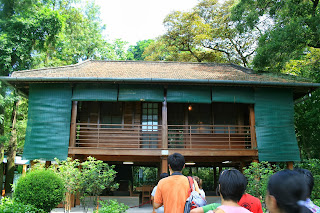 |
| Hanoi Opera House |
The city was occupied by the Japanese in 1940 and liberated in 1945, when it briefly became the seat of the Viet Minh government after Ho Chi Minh proclaimed the independence of Vietnam. However, the French returned and reoccupied the city in 1946. After nine years of fighting between the French and Viet Minh forces, Hanoi became the capital of an independent North Vietnam in 1954.During the Vietnam War, Hanoi's transportation facilities were disrupted by the bombing of bridges and railways. These were all, however, promptly repaired. Following the end of the war, Hanoi became the capital of a reunified Vietnam when North and South Vietnam were reunited on July 2, 1976.
 |
| One Pillar Pagoda |
No trip to Hanoi would be complete without a trip to Ho Chi Minh Museum. The building, completed in 1990, is intended to evoke a white lotus. Some photos and old letters are on display on the second floor, but the main exhibition space is on the third floor.
 |
| Inside the Ho Chi Minh Museum |
Next stop, the Ho Chi Minh Mausoleum, The city down south may have his name, but only Hanoi has the man himself, entombed in distinctly Leinin-esque fashion - against his wishes, but that's how it goes.
 |
| Ho Chi Minh Mausoleum |
From there you can explore the Presedential Palace Area where the "great" man lived. The nicely landscaped complex includes two of Ho Chi Minh's houses, kept shiny and "as he left them" by the authorities, as well as a garage with two of Ho's "used cars" and a carp-filled pond.
 |
| Presidential Palace |
From Hanoi, we moved onto our next destination which was Hue, to follow the next phase of our Vietnam adventure click on the underlined link.














































